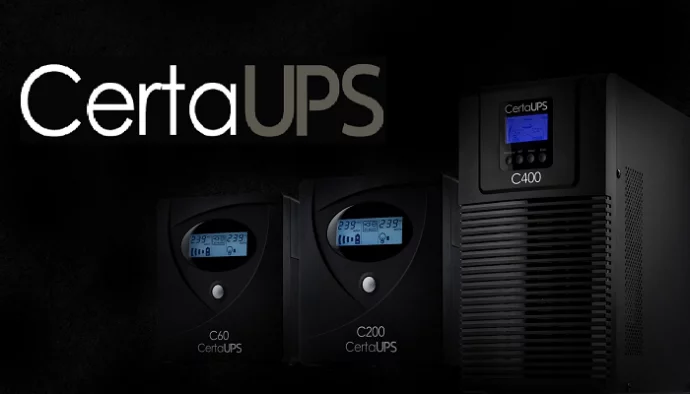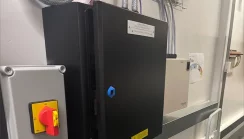How To Protect A Computer Room From Power Outages
As we head towards a winter with potential power disruptions, many organisations are reviewing how they will ensure their IT and computer rooms can run through a power outage and be safely shutdown if there is to be controlled capacity planning on the UK electricity grids.
What is a Power Outage?
Computer room and IT managers are looking at the best value uninterruptible power supplies to install and how to arrange these to cater for both unplanned and planned power outages.
A power outage can be a short term (several milliseconds) or longer loss of electrical power supply to a building or part of a building. The duration is dependent upon the cause of the power outage. Momentary breaks in electrical power can be caused by utilities switching substations on the electricity grids to meet high-capacity demands, load shedding, nearby lighting strikes, high windows, heatwaves or freezing temperature extremes, transients on overhead powerlines, or electrical storm interference. The most visible effect being flickering electrical lights. Longer term power outages lasting minutes or even hours are due to a more serious break in the electricity circuit and may be caused by a substation transformer failure, generating stations going offline, a cybersecurity breach or even a break in the local electricity supply cables caused by excavations.
The Uptime Institutes 2021 survey shows that in a data centre environment, 43% of outages are power related. In a computer room installation this percentage is most likely to be higher. Data centres tend to have multiple redundancy critical power paths including backup generators. These are less likely to be found on a lower budget computer room UPS installation.
More information:
https://www.techopedia.com/definition/13085/power-outage or
https://datacenterfrontier.com/uptime-longer-data-center-outages-are-becoming-more-common/
Typical Computer Room Equipment
Most organisations whether public or private have a separate room or space that acts as a hub for their IT operations. It is the room or IT closet where their file server and the associated networking devices, bridges and routers are housed, either floor or shelf standing or installed into a suitable 19inch server rack.
IT Backup Power List
The first step is to identify exactly what equipment is critical to the IT network operation. Most organisations have around 2-3 items that require uninterruptible power supply. What’s important is to identify each item that requires backup power and to list these on a spreadsheet including make, model number, their power requirements and plug connections.
Plug and Output Socket Connections
You may wonder why this important. Most UPS systems use an IEC type output socket. This is often referred to as a ‘kettle’ lead-type socket. The most used UPS IEC outlet socket is an IEC C13. An IEC C13 requires a corresponding IEC C14 plug and has a maximum power rating of 10Amps (10A).
Some of your computer room equipment will need a standard 13A UK BS1363 type socket. There are some desktop type UPS that have such sockets but with IEC-types being the primary outlet let what can you do? The answer is to use a small extension lead that provides a 13A outlet but connects to the UPS using an IEC C14 plug. Care again must be taken as the overall loading on this extension lead cannot exceed 10A.
With a complete asset list for battery backup and knowing the output connections required, the next step is to work out the power requirements.
Calculating Power Requirements
Uninterruptible power supplies are sized in what is termed VA or kVA. VA is a measurement of the Voltage required x Amps drawn. In the UK, the single-phase AC supply voltage that we plug IT devices into is 230Vac. For three-phase loads, it is 400Vac but for smaller computer and server rooms, it is rare to find a 400Vac three phase supply required.
On the spreadsheet, list 230Vac in a column for power supply requirements. Then add a column for Amps. This is the next factor required to calculate the VA or kVA. Amps or Amperage measure the current required by the load to operate. This can be taken from a rear rating plate, operational manual, or datasheet specification. Whilst this will be a worst-case value, it should not over inflate the total loading requirements for small UPS system sizing. If this is a concern, the actual load current could be measured in a power survey, or you could just derate by say 20-30%.
Adding another column (and VAxAmps formula) to the spreadsheet should provide a total VA requirement. This can be used to calculate a UPS size requirement. It is important to consider future requirements i.e., will you add more equipment later and what should you factor into the load calculation, say 25%? For small UPS installations, if you cannot find an Amperage for your IT devices but have a Watts figure, use this in place of the calculated VA.
Physical UPS Form Factor
Next to consider is the physical type of UPS required. For single-phase UPS there are three types:
- Desktop UPS: designed to be placed on a desktop or shelf this is a compact UPS design. There may be a wall mount bracket available as an option. This type of UPS could also ‘sit’ on top of a tower-format server.
- Tower UPS: a tower UPS is designed to sit on a desk or be floor standing. This makes it ideal for installation beside a floor standing server.
- Rackmount UPS: designed to install in a 19inch server cabinet, this type of UPS makes sense where the IT server is installed in rack. Some UPS can be referred to as ‘Dual’ or ‘Combo’ UPS meaning that they can be installed as tower floor standing or 19inch rackmount systems.
Backup Time and Load Shedding
How long should the UPS run for on battery? The most accepted norm here is 5-10 minutes. This caters for momentary power loss and can allow some systems to shutdown in an orderly manner, automatically. 25-30minutes provide more runtime and may require either oversizing the UPS to power a smaller load or an additional battery extension pack to be installed alongside the UPS. Longer runtimes up to several hours are also possible using battery extension packs.
Load shedding can be a feature on smaller UPS. The UPS output sockets are arranged into two groups. Both are powered with a stabilised supply when mains power is present. When there is a power outage, only the ‘backup’ group is powered. Non-essential loads in the ‘load shed’ group are dropped.
UPS Connectivity and Monitoring
Do you want to monitor your UPS system? A UPS will have audible and visual alarms and communications options. For lower cost systems communication ports are built-into the UPS including USB and/or D9 RS232 interfaces. More expensive systems will include these and options for plug-in cards to provide SNMP IP monitoring, and/or dry contacts and MODBUS interfaces for example.
UPS Monitoring Software
The latest generation of CertaUPS feature IoT monitoring via a mobile phone App and UPS monitoring software to install on local PC or server. The UPS software can be instructed by the UPS to initiate an orderly system shutdown automatically at a pre-set time when running on battery power or when the UPS approaches a low capacity/discharge alarm. It is important here to make sure you known the amount of time your IT requires for an orderly file and system shutdown and to build this into your backup time calculations.
UPS Types and Design Principles
One of the most confusing issues for UPS users for small IT systems is whether to install one of three types of UPS design. Whilst not wanting to get technical, the below list provides a very general overview.
- Standby/Offline: provides simple filtering when mains power is present and a basic backup supply during a power outage. The output waveform on inverter is a square or stepwave which most switch mode power supplies (SMPS) can work with, and the switching time is 4mS or greater. Not ideal for sensitive IT equipment.
- Line Interactive: the most installed UPS in smaller computer and server room applications. The UPS has a built-in automatic voltage regulator (AVR) to cater for brownouts and a filtering and spike suppression circuit for mains borne interference. The output quality is therefore good enough for the robust switch mode power supplies (SMPS) installed in modern computers, IT servers and network devices. When the mains power supply fails, the inverter switches in and provides backup power. The supply to the SMPS is almost continuous even with a slight drop as the inverter switches in and out of circuit. Electrical capacitance in the SMPS and UPS itself helps to cover the typical 2-4mS switching period. On battery the output wave may be a sinewave or pseudo sinewave. The nearest to a sinewave, the lower the stress/workload on the SMPS. A typical example being a CertaUPS C300R 1.5kVA UPS.
- Online Double Conversion: this type of UPS provides the highest levels of uninterruptible power as the output power is generated by the UPS inverter which is constantly running to provide a regulated and conditioned output. The UPS features an automatic bypass and so if the UPS is overloaded or there is a UPS problem, the connected load is automatically transferred to the incoming mains power supply, without a loss of power supply to the load. A typical example being a CertaUPS C400 1kVA.
For more information see our Guide to UPS technologies which also lists a wide variety of suitable uninterruptible power supplies for computer rooms.
UPS Maintenance Bypass
Should you bother? Well, there are two schools of thought here. For larger UPS installations a maintenance bypass makes sense. If there is ever a need to replace the UPS or isolate it for a service, and you don’t want disruption to your IT operations, then install a UPS maintenance bypass switch. This can be 19inch rack mounted (up to 6kVA) or wall mounted and at 3kVA and below can use plug and play IEC-type connections. On the other hand, a UPS maintenance bypass puts up the cost of the UPS installation and it is rare to find one in small UPS applications. If you ever need to replace the UPS batteries or swap out the UPS, can you afford downtime? That’s the question to ask.
Budget and Warranty
How much do you want to spend? Once you have factored in the above considerations you need to consider value for money. Warranty is a good counter point to consider on price. A superior quality UPS system should have a minimum 24month (2year) warranty, including the battery. 3 and 5year warranties may also be available, including or excluding the battery. The reason for this is that most UPS for small applications (up to 3kVA) use 5year design life batteries which will typically require replacement within years 3-4. Most users will opt for the UPS supplier to change their battery set then or look for an uninterruptible power supply with user-replaceable batteries.
Summary
At Server Room Environments we supply a range of uninterruptible power supplies, with extended warranties and onsite UPS maintenance contracts. We have preferred brands including CertaUPS whilst also offering a wide range of other leading UPS manufacturer’s solutions including APC, Eaton and Vertiv, to ensure we can supply the right computer room UPS to protect your IT installation from power outages.


























